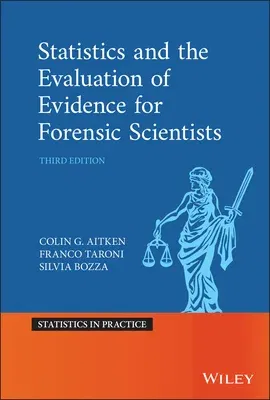Statistics and the Evaluation of Evidence for Forensic Scientists
The leading resource in the statistical evaluation and interpretation
of forensic evidence
The third edition of Statistics and the Evaluation of Evidence for
Forensic Scientists is fully updated to provide the latest research and
developments in the use of statistical techniques to evaluate and
interpret evidence. Courts are increasingly aware of the importance of
proper evidence assessment when there is an element of uncertainty.
Because of the increasing availability of data, the role of statistical
and probabilistic reasoning is gaining a higher profile in criminal
cases. That's why lawyers, forensic scientists, graduate students, and
researchers will find this book an essential resource, one which
explores how forensic evidence can be evaluated and interpreted
statistically. It's written as an accessible source of information for
all those with an interest in the evaluation and interpretation of
forensic scientific evidence.
- Discusses the entire chain of reasoning-from evidence pre-assessment
to court presentation;
- Includes material for the understanding of evidence interpretation for
single and multiple trace evidence;
- Provides real examples and data for improved understanding.
Since the first edition of this book was published in 1995, this
respected series has remained a leading resource in the statistical
evaluation of forensic evidence. It shares knowledge from authors in the
fields of statistics and forensic science who are international experts
in the area of evidence evaluation and interpretation. This book helps
people to deal with uncertainty related to scientific evidence and
propositions. It introduces a method of reasoning that shows how to
update beliefs coherently and to act rationally. In this edition,
readers can find new information on the topics of elicitation,
subjective probabilities, decision analysis, and cognitive bias, all
discussed in a Bayesian framework.

